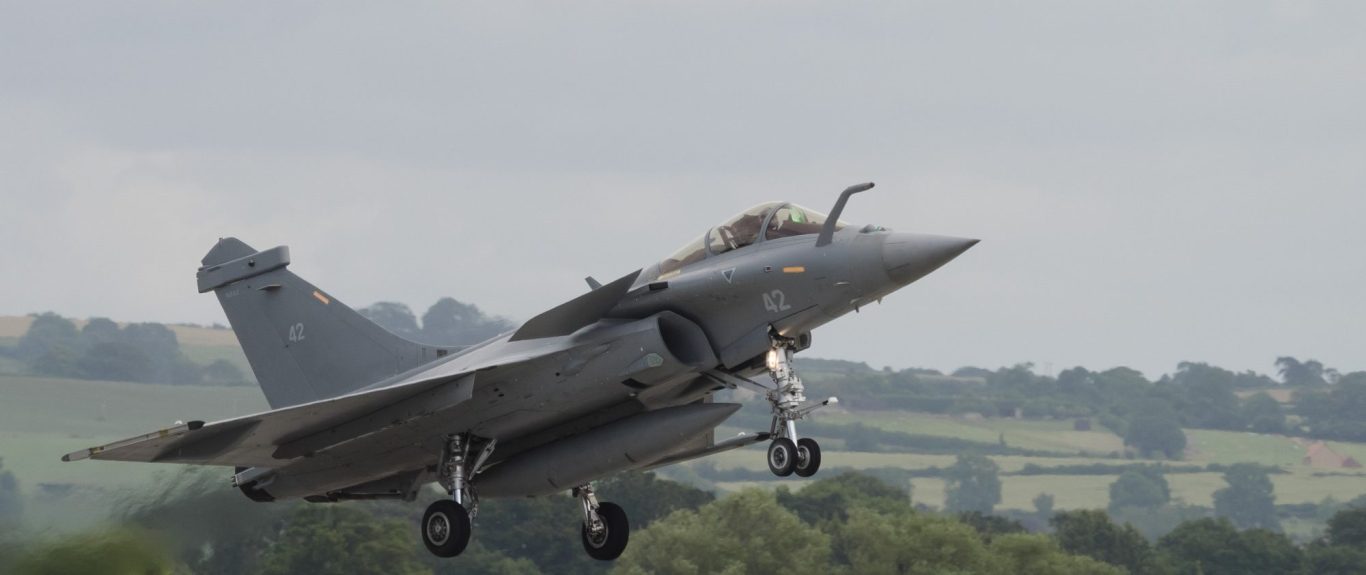How Global Rivalries Complicate Indonesia's Defense Choices
Indonesia, a vast island nation and the economic powerhouse of Southeast Asia, is now at the epicenter of an escalating geopolitical struggle. Its strategic position, straddling vital global maritime trade routes and serving as a crucial buffer between competing great powers, has made Jakarta a central battleground in a high-stakes contest for influence. As major military and economic powers actively vie to deepen ties, Indonesia faces the daunting task of meticulously balancing cost-effectiveness, military capability, and complex geopolitical implications in every defense acquisition. The ambition to upgrade its diverse but aging military fleet is unfolding against a backdrop of tight fiscal constraints, persistent internal procurement challenges, and escalating external pressures, transforming each decision into a nuanced act of strategic diplomacy.
This intricate problem is further compounded by direct economic pressures, notably the looming threat of significant US tariffs on Indonesian exports. Reports suggest that Jakarta is actively considering a multi-billion-dollar acquisition of advanced US weapons, such as the F-15EX fighter jet, primarily as a bargaining chip to potentially soften these proposed trade policies. While this approach might offer short-term economic relief, it carries profound inherent dangers. An over-reliance on a single foreign supplier, particularly one with significant geopolitical leverage, risks locking Indonesia into vulnerable supply chains, exposing it to potential delays in spare parts, and making it susceptible to shifts in the supplier's strategic priorities or export restrictions. Historical precedents, such as Turkey's experience with grounded F-35s due to US export restrictions or Indonesia's own past encounters with US arms embargoes, underscore how such dependency could critically hamper military readiness and ultimately erode Indonesia's cherished "independent and active" foreign policy doctrine. Simultaneously, the allure of more affordable alternatives like China's J-10 fighter jets, which boast recent combat claims and competitive capabilities, presents its own set of complexities, including unresolved questions about long-term military interoperability with existing diverse fleets, the extent of genuine technology transfer, and the enduring geopolitical sensitivities surrounding China's assertive posture and territorial disputes in the Natuna Sea.
In this intricate landscape, Indonesia's defense industry is unequivocally not orienting itself towards a single orientation country like China, India, or Russia. Instead, under President Prabowo Subianto's centralized defense policy, Indonesia is committed to a robust, diversified, and pragmatic omni-directional approach to its defense modernization. This strategy is deeply rooted in Indonesia's longstanding independent and active foreign policy, aiming to maximize its strategic autonomy and avoid over-reliance on any single global power. This multi-pronged engagement is abundantly evident across various defense sectors and supplier nations. For its air force modernization, Indonesia has a significant, ongoing deal for French Rafale fighter jets, with the first deliveries expected next year, and President Prabowo has highlighted France as a main partner for modernizing primary weapons systems, often emphasizing joint production and technology transfer. Concurrently, Indonesia is actively considering US F-15EX fighter jets, exploring this avenue not just for capability but also for its potential leverage in trade negotiations. A crucial and notable development is the strong indication of interest in China's J-10 fighter jets, with discussions on pilot training and resumed military exercises, suggesting a potential shift towards Chinese platforms, likely driven by affordability. This comes even as Russian ROSOBORONEXPORT continues to make substantial offers, including Su-57E and Su-35 fighter jets, advanced air defense systems like the S-400, and various naval assets, with a strong emphasis on technology cooperation and local manufacturing, highlighted by Indonesia's recent inaugural joint naval exercise with the Russian Navy.
Beyond fighter jets, Indonesia's naval and ground forces also reflect this broad-based approach. The country has acquired frigates from Italy and is building Arrowhead 140 frigates under license from the UK. It is also co-developing Scorpene submarines with France's Naval Group, involving significant local production and technology transfer. The Indonesian Marine Corps is undertaking strategic enhancements to its Russian BMP-3F amphibious infantry fighting vehicles, demonstrating continued engagement with Moscow for specific platforms. Furthermore, Indonesia is in active negotiations for Indian BrahMos cruise missiles, underscoring a deepening defense relationship with New Delhi. While the South Korean KAI KF-21 Boramae fighter program has faced financial challenges for Indonesia, it remains part of Jakarta's long-term modernization efforts as a means of technology acquisition. Additionally, recent research and development partnerships with Turkey in the defense industry highlight further diversification and a push for local self-reliance and indigenous production capabilities. This comprehensive strategy, also reflected in Jakarta joining BRICS in January 2025, unequivocally demonstrates Indonesia’s commitment to maximizing its geopolitical flexibility through a varied and extensive network of defense partners, rather than aligning predominantly with any one nation.
However, experts express several critical concerns regarding Indonesia's defense modernization trajectory. Firstly, there are worries that Indonesia's chronic procurement dysfunction, underfunding, and fragmented planning could impede its ability to effectively integrate and sustain such a diverse array of advanced defense systems from multiple origins. This heterogeneity can lead to complex interoperability challenges, increased maintenance costs, and potentially dilute the overall effectiveness of its modernized forces. Secondly, the increasing involvement of the military (TNI) in non-combat, civilian roles, such as food security programs and social initiatives, raises concerns about the blurring of civil-military boundaries. While this offers immediate benefits in terms of rapid policy delivery, it carries the risk of eroding democratic oversight and disincentivizing civilian institutions from developing their own capacities. Lastly, while diversification is a core tenet of strategic autonomy, striking the right balance is crucial. Overspending on arms, particularly if influenced more by economic diplomacy and trade leverage than by pure defense requirements, could further strain Indonesia's already pressured budget. Analysts emphasize that for Indonesia to truly thrive and safeguard its long-term strategic independence, procurements must genuinely meet its defense needs and significantly bolster its indigenous defense industrial base, rather than merely serving as political gestures or short-term fixes. The road ahead for Indonesia’s defense modernization is thus one of careful calibration, where strategic ambition must meet pragmatic execution.
Sources:
- "ROSOBORONEXPORT to take part in re-equipping Indonesian Armed Forces." Asian Military Review, June 10, 2025. https://www.asianmilitaryreview.com/2025/06/rosoboronexport-to-take-part-in-re-equipping-indonesian-armed-forces/
- "Indonesia torn between China’s J-10 and US F-15EX." Asia Times, June 6, 2025. https://asiatimes.com/2025/06/indonesia-torn-between-chinas-j-10-and-us-f-15ex/
- "Indonesia Hints at China’s J-10 Fighter Jets Deal in Deleted Defense Minister Post." China Global South, June 3, 2025. https://chinaglobalsouth.com/analysis/indonesia-defense-minister-deleted-post-j10-fighter-jets/
- "Indonesia may acquire 42 used J-10 fighter jets from China." Bulgarian Military, May 27, 2025. https://bulgarianmilitary.com/2025/05/27/indonesia-may-acquire-42-used-j-10-fighter-jets-from-china/
- "China, France, and the Political Economy of Defense Modernization in Southeast Asia." The Diplomat, May 20, 2025. https://thediplomat.com/2025/05/china-france-and-the-political-economy-of-defense-modernization-in-southeast-asia/
- "An Early Assessment of Indonesia’s Defence Policy under Prabowo: Stylistic Changes; Directional Continuity." Keoni Marzuki, S. Rajaratnam School of International Studies, May 20, 2025. (Note: Full URL not provided in chat, but context indicates publication by RSIS.)
- "US tariffs complicate Indonesian defence acquisition." ASPI - The Strategist, May 5, 2025. https://www.aspistrategist.org.au/us-tariffs-complicate-indonesian-defence-acquisition/
- "Indonesia Awaits Indian Defense Minister's Visit to Finalize Missile Purchase Talks." Tempo Online, April 30, 2025. https://en.tempo.co/read/2002215/indonesia-awaits-indian-defense-ministers-visit-to-finalize-missile-purchase-talks
- "Air Force chief says defense procurement awaits govt policy amid Chinese Jet reports." Indonesia Business Post, May 30, 2025. https://indonesiabusinesspost.com/4411/defense-and-security/air-force-chief-says-defense-procurement-awaits-govt-policy-amid-chinese-jet-reports
- "Indonesia in the spotlight as military rivalry of major powers heats up." The Straits Times, April 22, 2025. https://www.straitstimes.com/asia/se-asia/indonesia-in-the-spotlight-as-military-rivalry-of-major-powers-heats-up

DEFENSE
June 17, 2025
We need your consent to load the translations
We use a third-party service to translate the website content that may collect data about your activity. Please review the details in the privacy policy and accept the service to view the translations.

